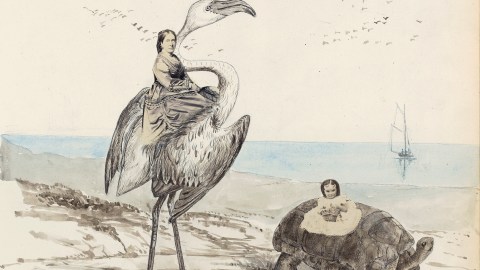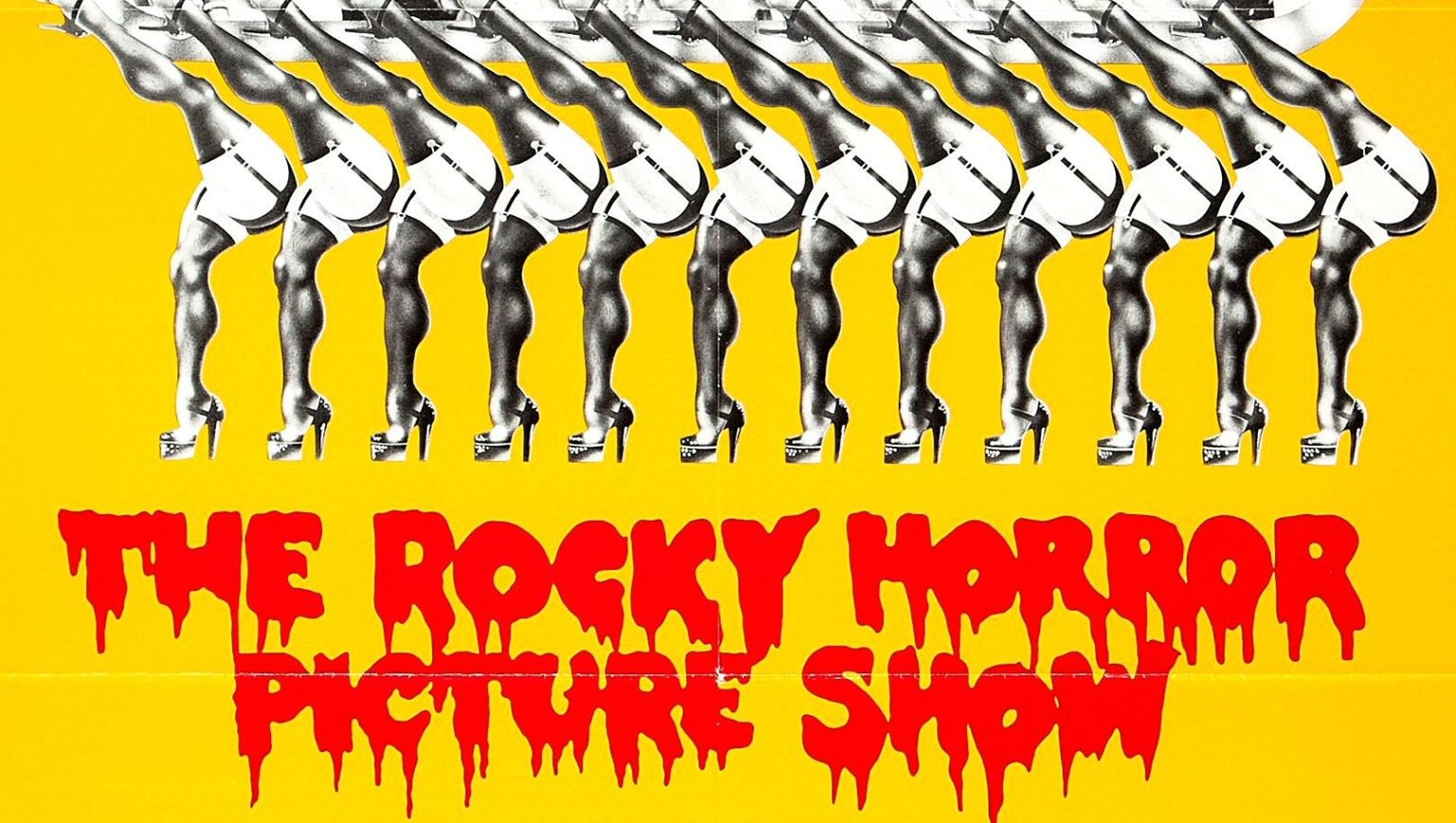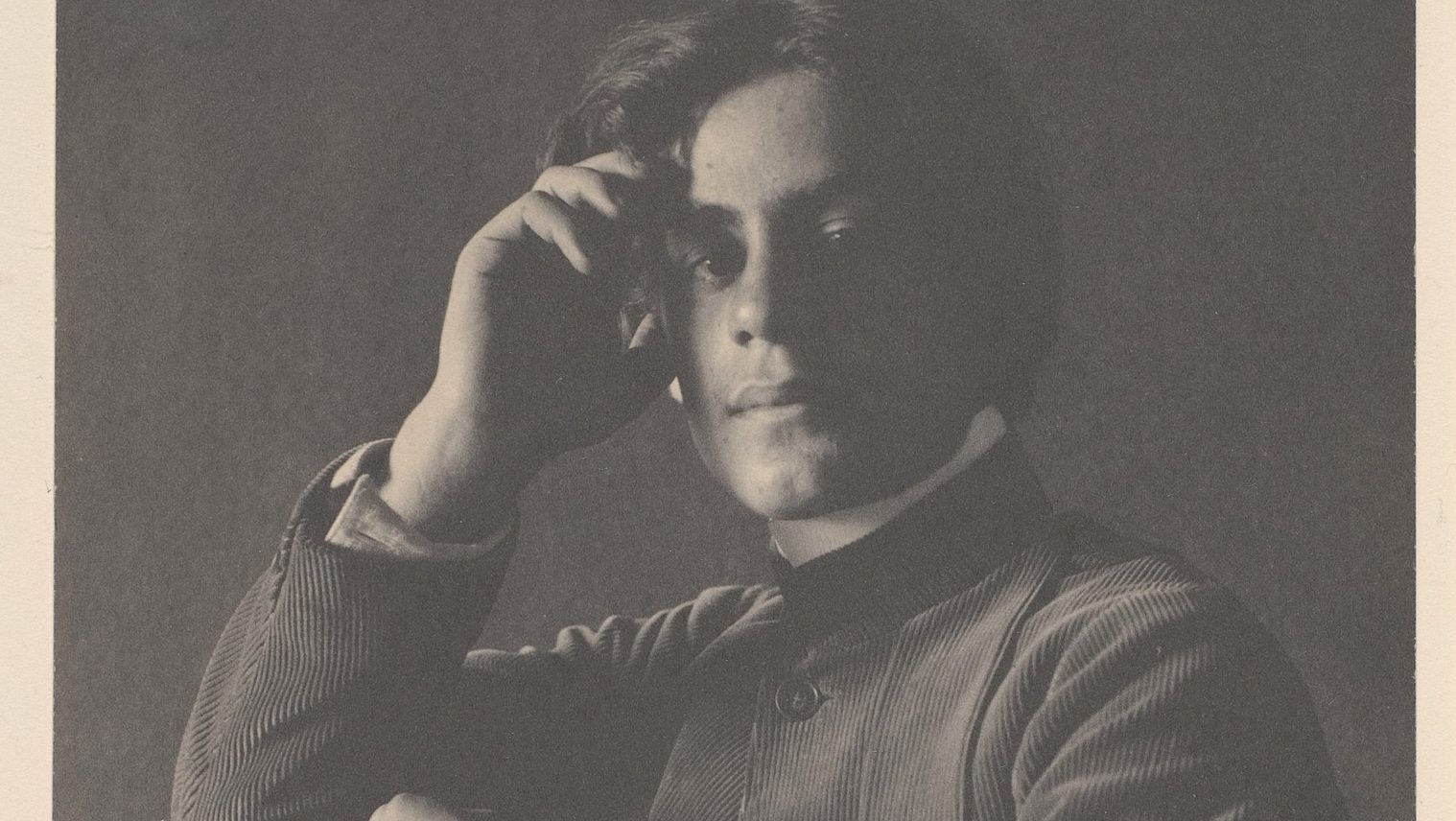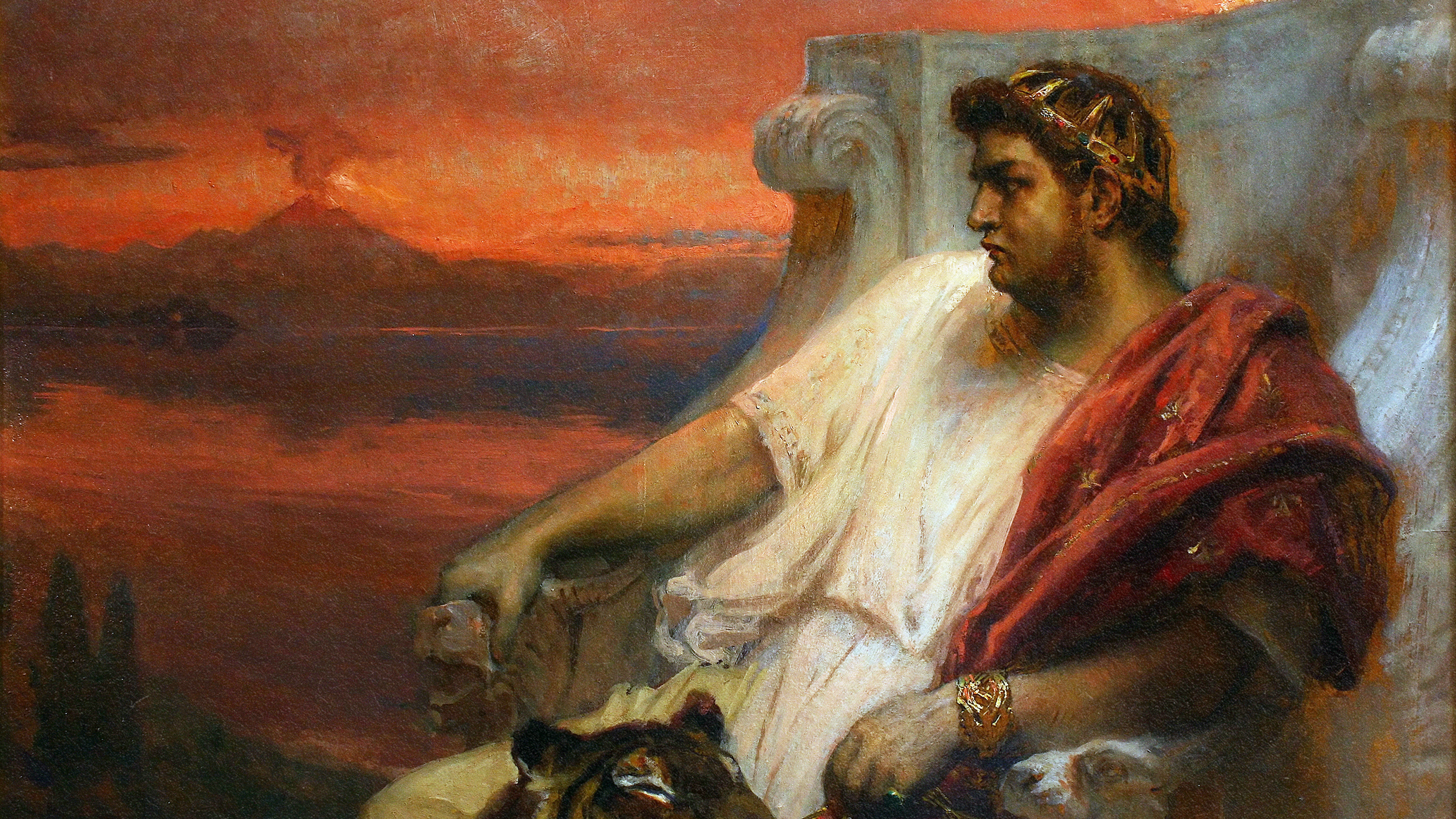The Other Victorians

One of my first subversive art experiences was watching Terry Gilliam’s animated collage title sequences for Monty Python. The Pythons loved to poke fun at the vestiges of stuffy Victorian culture in British contemporary life with the subtlety of that giant foot stomping down at the end of each Gilliam short. Playing with Pictures: The Art of Victorian Photocollage, a new exhibition at the Metropolitan Museum of Art kicks back at the idea of a monolithically moralistic Victorian age and shows the subversive side of the Victorians themselves, who poked fun at themselves long before the Pythons.
The exhibition draws mainly from albums created in the 1860s and 1870s mostly by aristocratic women. Using photographs and watercolors, these women placed heads on playing cards, stamps, animal bodies, and other decorative objects in landscapes of their imagining. The stuffy cliché of Victorian parlor games gives way to a subversive scene more Alice in Wonderland than temperance society. Although these women created these albums for the private enjoyment of a select circle, the sense of public theater screams out with every unreal image.
“Although they were engaging in an occupation that was perfectly acceptable within Victorian culture, album makers unwittingly anticipated the modern era and issues that would later preoccupy the avant-garde: the infiltration of mechanically produced materials into art; the fluid mixing of diverse media; the convergence of multiple authors; and the creative act as a process of collecting and assembling rather than origination,” writes Elizabeth Siegel in her catalogue essay, “Society Cutups.” “Victorian photocollage is unquestionably of its era, and yet it is
also remarkably modern.” The idea of Victorian art as avant-garde seems bizarre, but one look at these bizarre images will change your mind. Perhaps the biggest barriers to accepting the premise of Playing with Pictures are the ideas that commercial photography and untrained women artists can be considered fine art. “Victorian photocollage thus suffers the double indignity of being the product of both industrial photography and feminine craft,” Siegel argues. “It also falls uneasily between the cracks of separate fields, as it is neither strictly photography nor fully painting.” This exhibition saves these forgotten women artists from falling into those cracks forever.
Georgina Louisa Berkeley ranks among these near-forgotten artists. Great-granddaughter of the 4th Earl of Berkeley, Georgina kept up the aristocratic lifestyle despite no title or inheritance, hanging on to the bottom rungs of the ladder of privilege by imposing on the hospitality of more fortunate relations. Georgina loved London and filled her album with images of the theater and the bustling streets. Yet, stranger images such as that of human heads stacked atop birds and turtles (pictured) speak of a sophistication greater than that of just an unwelcome houseguest.
Playing with Pictures plays with our modern minds, forcing us to see past easy labels such as “Victorian” to recognize the first stirrings of modern sensibility bordering on the surreal. These aren’t your grandmother’s Victorians of tea and crumpets. These are the Victorians who faced the initial blows of modernized warfare and the consequences of massively overpopulated major cities and maintained a stiff upper lip. Playing with Pictures proves that that stiff upper lip was sometimes a sly smile.
[Image: Georgina Berkeley (English, 1831–1919), Untitled Page from The Berkeley Album, 1866–71. Collage of watercolor, ink, pencil, and albumen silver prints. Musée d’Orsay, Paris.]
[Many thanks to the Metropolitan Museum of Art for providing me with image above and press materials for the exhibition Playing with Pictures: The Art of Victorian Photocollage, running through May 9, 2010.]





